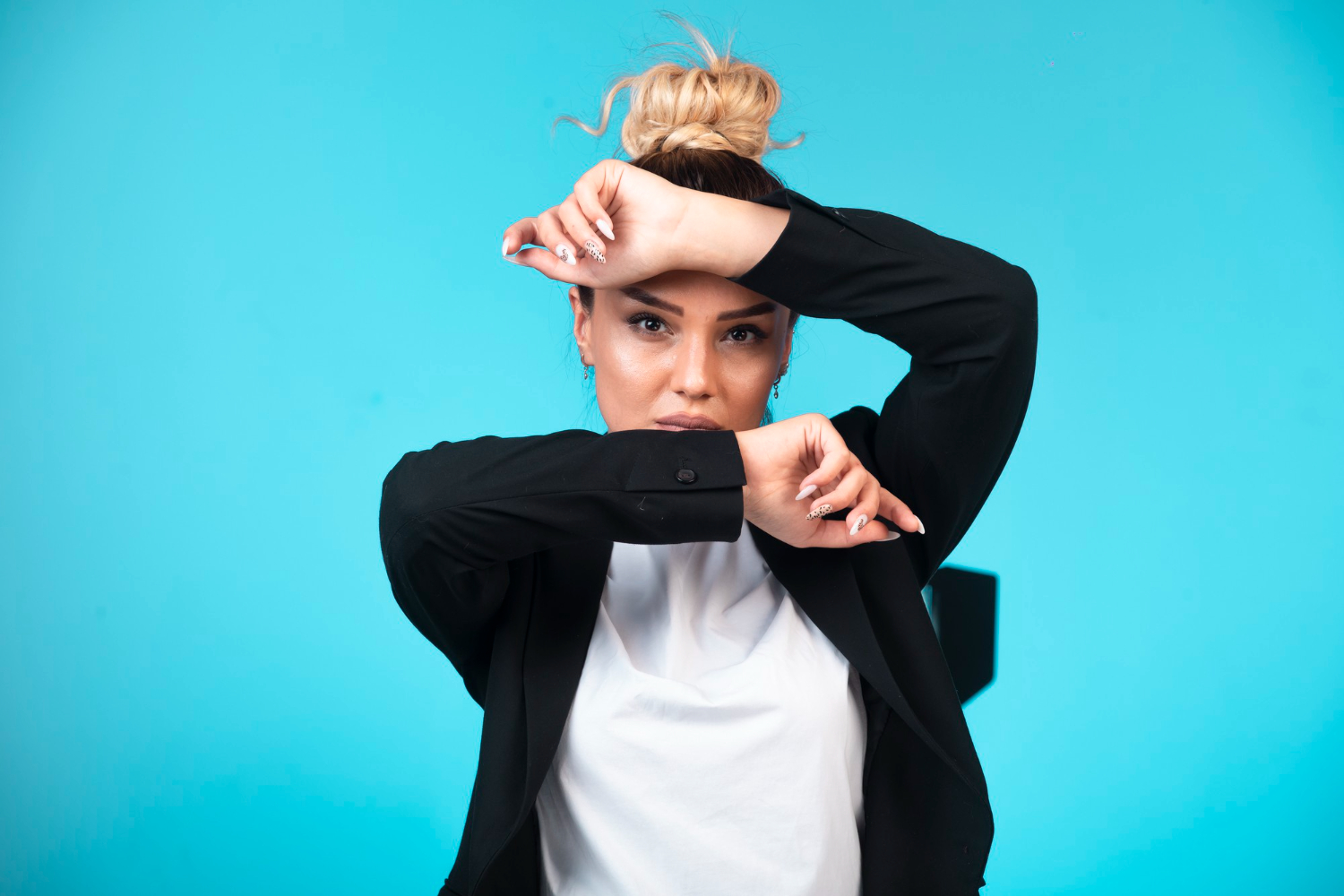In front of the camera, everything comes down to expression, posture, and confidence. But even with all the confidence in the world, if your posing isn’t strong, your image won’t communicate the message it’s meant to. That’s why mastering the essentials is key. Over time, I’ve realized that some poses just work, regardless of the mood, setting, or concept. These are the poses I always go back to when I need something reliable, versatile, and professional.
These are my go-to foundations. The Top 10 Poses Every Model Should Master are timeless and form the backbone of countless campaigns, editorials, lookbooks, and commercial shoots. Once you master them, your range and presence in front of the lens will expand exponentially.
The Three-Quarter Turn
One of the most flattering angles for the human body is the three-quarter turn. This pose adds dimension, slims the figure, and creates visual interest. I usually angle my body slightly away from the camera while keeping my face turned toward the lens. It gives a more dynamic feel than shooting straight-on and works perfectly in both beauty and fashion contexts. I often shift my weight to one leg and keep my arms relaxed for a natural vibe.
The Over-The-Shoulder Look
This pose adds a touch of mystery and elegance. I turn my back partly to the camera and look back over my shoulder. It’s ideal for beauty close-ups and looks that involve high drama or glamour. What makes this pose powerful is how it lengthens the neck, frames the jawline, and draws attention to the eyes.
Hands-On-Hips Power Stance
When strength and confidence are the message, this pose delivers. Standing straight with both hands placed firmly on my hips automatically improves my posture. My shoulders roll back, chest opens, and it exudes empowerment. It’s a staple for runway test shoots or catalog jobs where presence matters.
One Leg Forward
Whenever I want to elongate my frame, I extend one leg slightly in front of the other. This creates long lines through the body and introduces a beautiful shape from head to toe. I shift weight onto the back leg and keep my front knee soft. It looks effortless but does so much for the silhouette.
Seated Poses With Angles
Sitting can be tricky because it can make the body appear compressed. But when done well, seated poses are incredibly striking. I sit at the edge of a bench or chair, keeping my back straight and limbs angular. A bent elbow resting on a thigh or a hand loosely draped over a knee gives it a sense of elegance. These poses are particularly effective for editorial spreads or portraits with moody lighting.
The Crossed-Arms Statement
When I need to convey a bit of edge or self-assured attitude, I cross my arms lightly across my chest. Not tightly or defensively, but relaxed, with wrists visible and shoulders open. It’s a strong, minimalist gesture that draws attention to facial features and clothing without being too over-the-top.
Leaning Against a Wall
Walls are amazing posing tools. Whether I’m shooting outside or in-studio, I use walls to create interaction and casual energy. Sometimes I lean back and shift my hips to one side. Other times, I lean with a shoulder or let my head rest slightly. It adds texture to the image and makes the pose feel spontaneous.
Walking Shots in Motion
Movement is crucial to modeling, and learning to pose while walking is a must. I take slow, deliberate steps while maintaining good posture. I allow my arms to swing naturally and shift my gaze slightly away from the lens. These shots bring garments to life, which is why the walking pose is a favorite for lookbooks and street style shoots. It’s one of the Top 10 Poses Every Model Should Master because it combines grace with realism.
The Long Neck and Chin Forward
When I need a clean beauty shot or a tight head-and-shoulders crop, I focus on extending my neck slightly and pushing my chin forward. This sounds odd, but it sharpens the jawline and makes facial features pop on camera. It’s a subtle pose but one of the most important techniques I’ve ever learned. I often combine it with soft hands near the collarbone or a sideways glance to keep it soft.
The “S” Curve
Last but not least is the classic S curve, iconic and used across nearly every genre of modeling. I create it by shifting my weight to one hip, dropping one shoulder slightly, and letting my body create a flowing curve from shoulder to toe. It adds movement to a still image and flatters nearly every body type. Whether I’m wearing a gown or athleisure, the S curve creates structure and draws the eye naturally.
Refining Details Between Poses
Knowing the Top 10 Poses Every Model Should Master is the first step, but mastering the micro-adjustments makes them truly effective. A tilt of the chin, soft bend in the fingers, or where the eyes are looking can elevate the image from standard to standout. I always practice these poses in front of a mirror so that I can refine the details, what works for one angle might need a slight tweak depending on lighting or lens choice.
Posing With Confidence and Comfort
Comfort plays a massive role in how a pose photographs. I’ve learned that when I’m tense, it shows. Even when doing a structured pose like hands-on-hips, I focus on keeping my jaw relaxed, eyes engaged, and body language expressive. That’s what brings life to the image. Confidence doesn’t mean stiff or stoic, it means being in control of your body and aware of how it speaks to the camera.
Practice Through Repetition
Repetition is how I built muscle memory. I practiced the Top 10 Poses Every Model Should Master until they became second nature. That way, during a fast-paced shoot, I’m not overthinking, I’m simply flowing from one pose to another with confidence. I recommend taking photos or videos of yourself trying each pose from multiple angles. You’ll discover what flatters you most and start building a signature rhythm.
Customizing Poses for Brand Aesthetics
Different jobs call for different vibes. For high fashion, I may exaggerate lines, use sharp movements, or break traditional symmetry. For commercial shoots, I lean more into warmth, relatability, and open gestures. Once I became fluent in the Top 10 Poses Every Model Should Master, I was able to tailor them to match the client’s brand without losing my personal touch.
Working With Photographers
Photographers often give direction, but they appreciate when a model brings their own ideas to the set. I always arrive with this core library of poses and adapt them based on the photographer’s feedback. Collaboration begins when I take initiative, move fluidly, and maintain awareness of light, framing, and mood. Posing becomes a dialogue rather than a performance.
Creating a Flow in Posing Sequences
During a shoot, I don’t just strike a pose and freeze. I think in terms of transitions. From the three-quarter turn, I might shift into an over-the-shoulder glance, then step into a walking motion, and so on. This creates continuity for the photographer and often results in a wider range of usable shots. Knowing the Top 10 Poses Every Model Should Master helps me sequence movements naturally and creatively.
Avoiding Common Mistakes
Over-posing is one of the pitfalls I had to overcome. When poses look too rehearsed or exaggerated, they lose their impact. I focus on keeping movements subtle, clean, and emotionally connected. Another mistake is ignoring facial expressions while concentrating on body angles. Every pose should still engage the viewer through the eyes or facial energy.
Adapting to Different Outfits
Every outfit I wear changes how I pose. A long dress may need sweeping gestures or flowing spins. A structured suit calls for sharp lines and bold stances. I always consider how the fabric moves and how best to highlight its features. These core poses give me a flexible framework to build from, no matter what I’m wearing.
Why These Poses Matter
These poses have helped me in castings, editorials, e-commerce jobs, and personal creative projects. They form the basis of my visual vocabulary. Whether you’re just starting out or refining your skills, mastering the Top 10 Poses Every Model Should Master gives you control over your image and empowers you to deliver strong, consistent results.
Conclusion
Every model has their own style, but the strongest portfolios and careers are built on foundational skills. These ten poses are reliable, flattering, and flexible enough to grow with you. With time, they’ll evolve into a unique expression of your personality and brand. Mastering them isn’t just about striking a shape, it’s about owning the frame with presence, energy, and intention.

